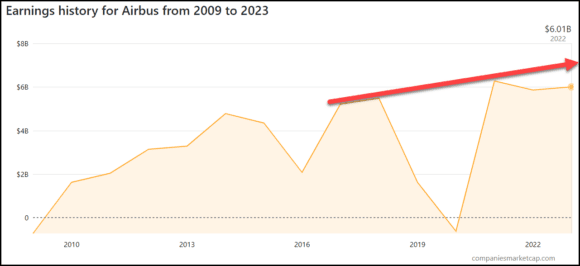In the single aisle market the dominance of Airbus and Boeing is total. Take a look at this chart.
 In 2000 the duopoly had 57% market share and as of 2Q16, this had grown to 72%. The duopoly fleet rose from 6,151 to 14,128. These two firms have effectively squeezed competitors; some have left the industry and those remaining are facing nasty competitive pressures.
In 2000 the duopoly had 57% market share and as of 2Q16, this had grown to 72%. The duopoly fleet rose from 6,151 to 14,128. These two firms have effectively squeezed competitors; some have left the industry and those remaining are facing nasty competitive pressures.
The economies of scale provides Airbus and Boeing with unassailable power. Writing off development costs over thousands, rather than hundreds, of airplanes makes significant a difference to the bottom line. Every company in the global aerospace supply chain will, by default, want to work on Airbus and Boeing projects, as they are lower risk and offer higher volumes. This only adds to their economic clout. One can see how Pratt & Whitney’s focus of attention moved from Bombardier to Airbus once the latter selected the GTF. This was completely rational for Pratt & Whitney, as that aircraft will likely sell an order of magnitude more engines. The same applies to all the other supply chain participants, who recognize that all of the airframe manufacturers tend to shop at the same stores.
This make growth for Bombardier and Embraer more difficult, even when they come up with superb products (which they have). The squeeze also goes to the supply of people who have the talents that OEMs need. Where would you be looking for a job? Airbus and Boeing are the first choice. The Airbus-Boeing duopoly exposes people to the best in new ideas and technologies that result from larger R&D budgets. These two firms offer the best platforms for adding skills and career enhancing knowledge.
But if Bombardier and Embraer, each of whom is well established, find it difficult, imagine then the challenges faced by SuperJet, COMAC, IRKUT and others thinking about entering the business. The Chinese and Russian firms have some level of protection in local markets and government support. But Airbus and Boeing have a tremendous head start, with global supply chains and support facilities. Breaking into a tightly knit market is a difficult task.
The squeeze the duopoly brings to bear is tremendous. Just ask Bombardier about the early pressure on C Series deals. Every time they got close, one of the big two would make an airline “an offer it couldn’t refuse.” Despite the pressures, Embraer and Bombardier appear ready for the long-haul, albeit with government support for the latter, and should be able to weather the storm. But SuperJet, COMAC and Irkut face the daunting task of building an industry reputation in the face of entrenched competition that doesn’t want to cede market share. The smaller players will be squeezed – the question is how long they can withstand it and develop a niche that is sustainable?





Addison,
Respectively disagree. When you have a process involving 2 or 3 project managers for a single-man R&D task (who contribute nothing but headaches) – then no – you will not attract the best people. I know of brilliant people who have threw up the head and walked out on the “big two” because the tail wags the dog.
The best people are frequently the contractors who float around working on multiple programs for multiple OEMs. Many of the “integrators” in Airbus/Boeing/Bombardier/Embraer are probably no longer*/never were** capable of designing/analysing their own aircraft at anything like the throughput of their subcontractors!
*if they are >45 yrs old
*if they are <40 yrs old
The one exception to this may be the aerodynamics department – they use in-house bespoke codes and keep the knowledge in-house. Very rarely will aerodynamics work be sent out to subcontract AFAIK.